In my recent thriller, To Die Again (see description at end of blog), the characters of my story are evading bad guys and do the unthinkable…they drive their small car (think Smart Car) down the famous Spanish Steps in Rome, Italy. Since I just spent some time in Rome and stayed not far from the Spanish Steps, I snapped a few shots to share and take you on a short journey down the famous Spanish Steps.
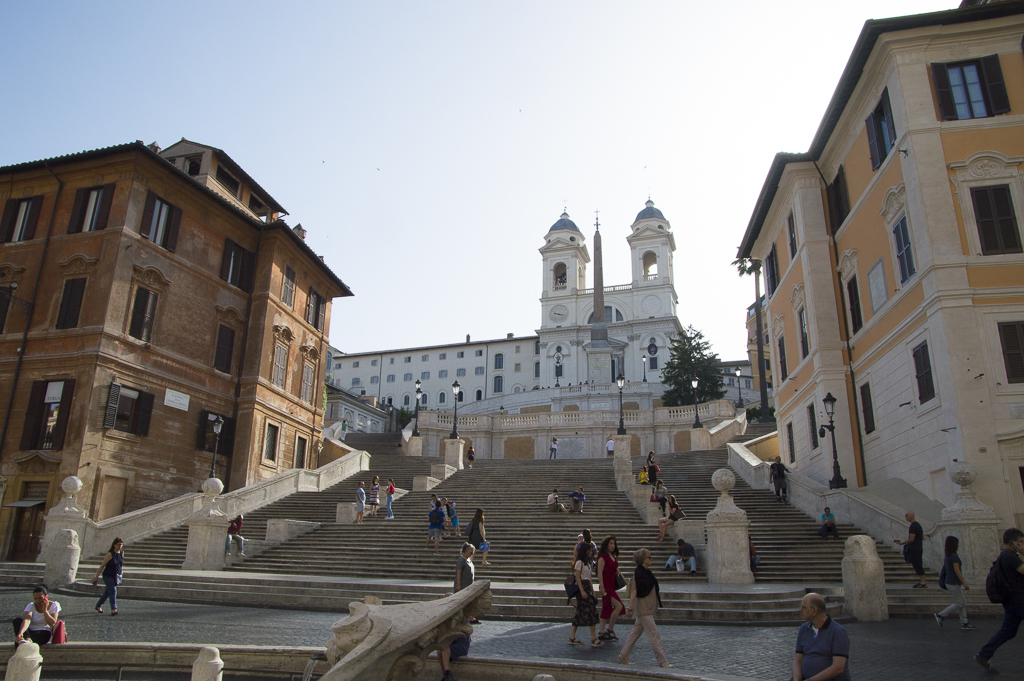
Considering the pride the Italians have for their historic landmarks, and the millions of dollars that have been put into restorations over the years, driving anything down the steps is an unthinkable act (and can land you in a boatload of trouble$). Drinking or eating lunch on the steps is discouraged. The steps have been, however, a prime meeting place for young and old alike, since their construction (see the crowds below).
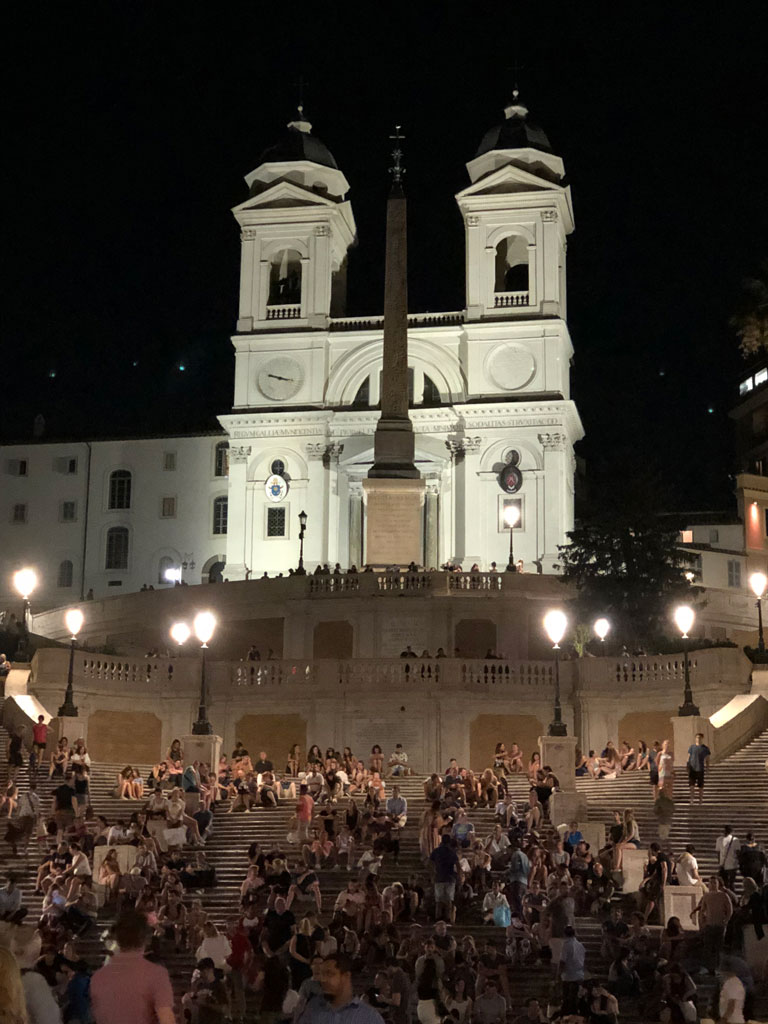
A little history might help to understand the what, why, and where of the Spanish Steps. The steps are technically called “Scalinata di Trinita dei Monti.” The 135 steps are located in Rome, Italy, and were built on the steep hillside to connect the Piazza Trinita dei Monti (under patronage of French king) at the top to the Piazza di Spagna (Spain) at the bottom. Or you could say it linked the Spanish Embassy at the bottom (which is now off the end of the plaza) to the Trinita dei Monti church up above. How old are these steps? Plans and ideas for the steps began in the 1500s but due to funding, and social and political disagreements, they did not get built until the 1700s. They were designed by Francesco de Sanctis and constructed from 1723-25. Now let’s start at the top of the stairs and work our way down. The explanations are in the photo captions.
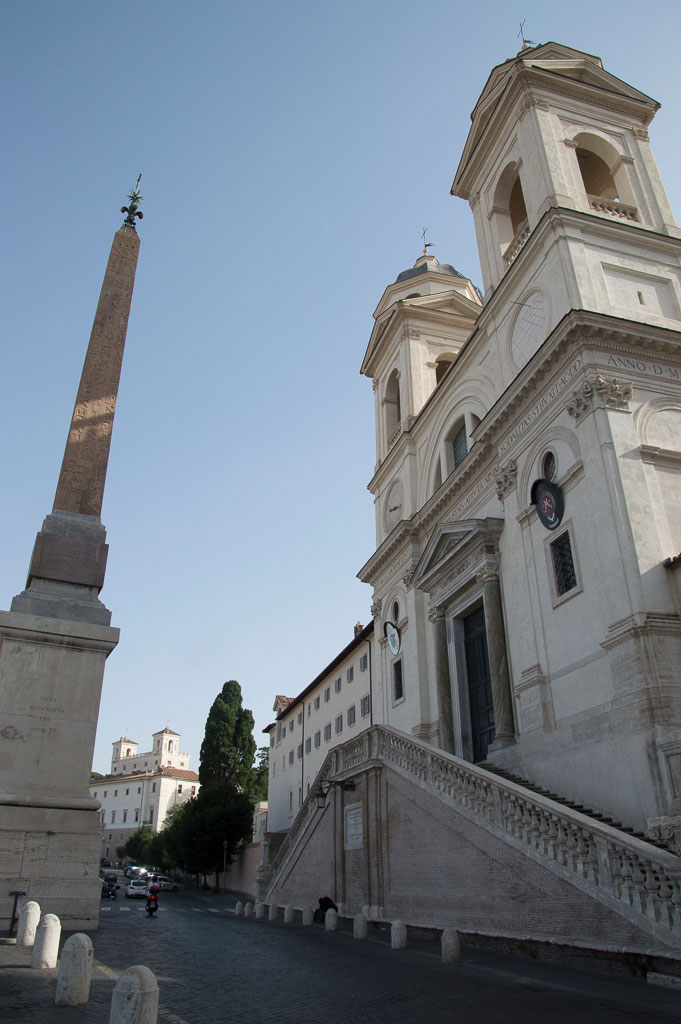

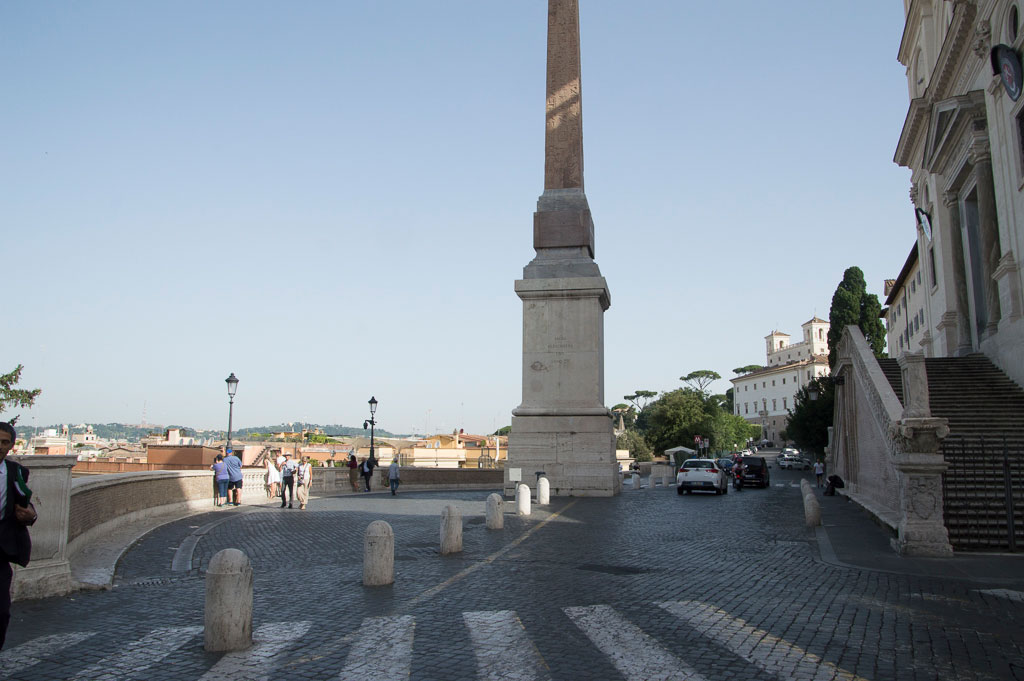
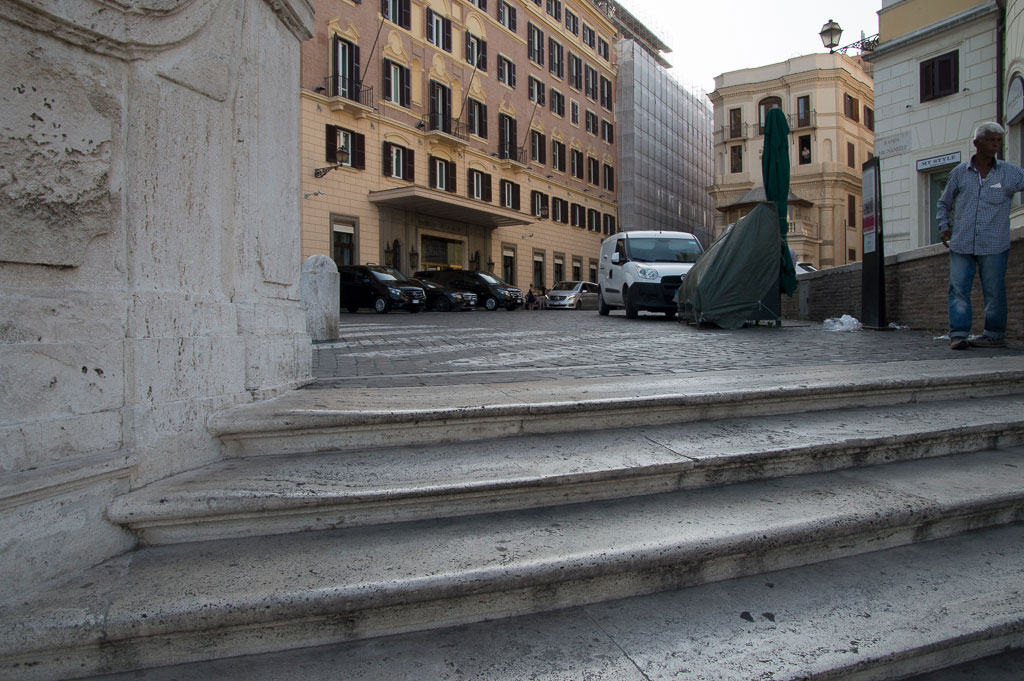
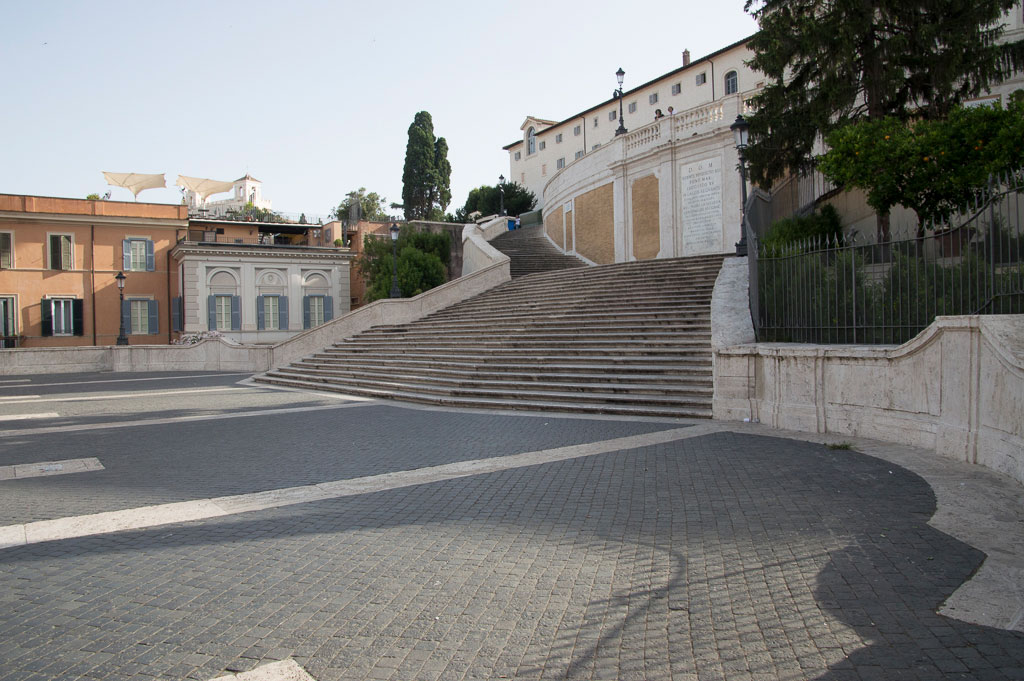

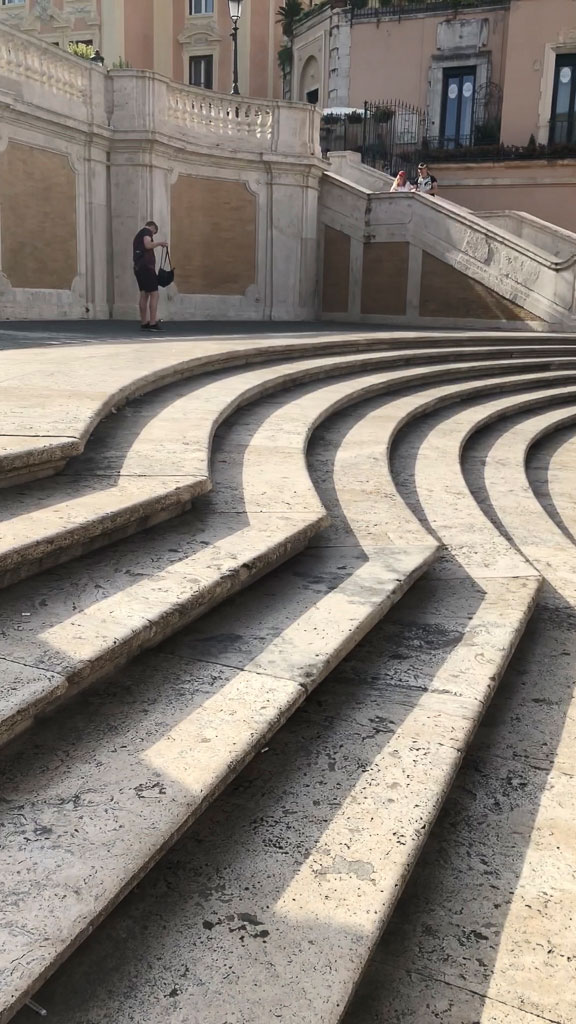

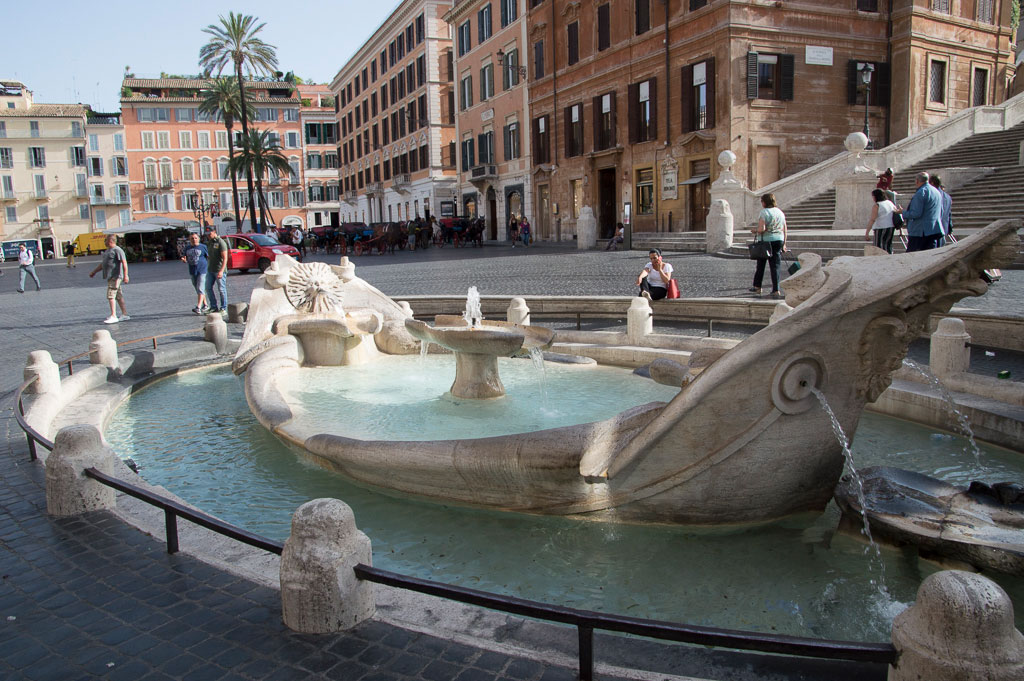
Much to my surprise, the early Baroque fountain at the bottom was actually built a hundred years before the steps in 1627-29. I’ve seen Fontana della Barcaccia referred to as the fountain of the long or old boat. It is believed to have been designed by Pietro Bernini (the father to the more famous Gian Lorenzo Bernini). The design was also supposed to be that of a sinking boat, and it is certainly sinking into the street.
Other fun facts about the Spanish steps:
-English poet John Keats lived and died (1821 at 25) in a house on the right at the bottom of the steps (26 Piazza di Spagna). I believe it is the Keats-Shelley House museum now.
-The last restoration of the Spanish Steps was in 2016 and Bulgari donated 1.5 mil toward the cause.
-The steps became famous to Americans after the 1953 film Roman Holiday starring Audrey Hepburn and Gregory Peck. For younger folks, they also showed up in The Talented Mr. Ripley starring Matt Damon.
∞ ∞ ∞
If you’re wondering about the book in which I used the Spanish Steps and parts of Rome as a setting for several scenes, check out TO DIE AGAIN, a modern day thriller with science fiction and romantic elements. Links to Amazon and other retailers can be found on my website by clicking here BOOKPAGE.

A woman who doesn’t die.
A human who isn’t easy to kill.
A man who murders for power.
Death doesn’t come easy to Dr. Mona Signoretti, who is closing in on a killer she has tracked for two thousand years. As part of a special FBI unit, her failure to stop him puts at risk the population of Earth as well as the mission to save her part-human race from destruction. When Mona’s undercover role is discovered, and her life-sustaining energy threatened, human FBI agent, Grant Thornton, is assigned to work the case and keep her alive—not an easy task in a world where enemies refuse to die.
Book one of this modern-day thriller series set in the ordinary world, mixes adventure with technology, and politics with science fiction. If you enjoy memorable characters, strong heroes and heroines, and a touch of romance, then dive into the world of Infinitas. Pick up To Die Again by an author of four national writing awards.

Leave a Reply